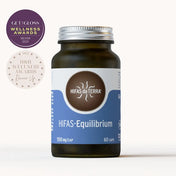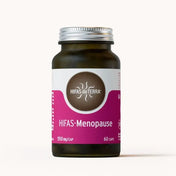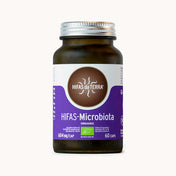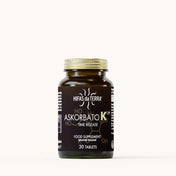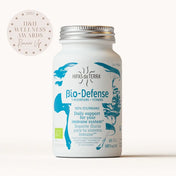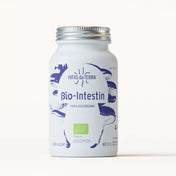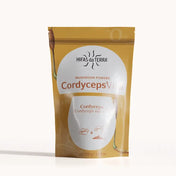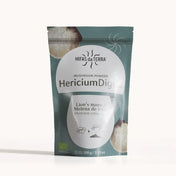Cordyceps sinensis It is one of the most popular natural remedies in traditional Asian medicine. According to the volume The wild edible fungi - global perspective of their use and importance for the population edited by FAO, this fungus "eat" only for its health benefits.
1.- Why talk about Cordyceps sinensis Like ‘Tibetan Treasury’
This fungus-oruga grows naturally in the high plateaus of the Tibet and years ago it is collected intensely in areas of China, Bután and Nepal. It is a resource of great value for its Medicinal properties and for the important economic benefits he reports to his collectors.
Posted on 01/23/2016.
Author: Education Hifas da Terra
Content index
2.- It is worth more than its weight in gold
A few years ago, in an article of The Economist Reference was made to the value of cordyceps as medication, «Often so high that it is worth more than its weight in gold ».
In 2008, a report of Los Angeles Times He quoted a Tibetan nomad that claimed to win up to a thousand dollars a week collecting this fungus.
Other documents consulted talk that a copy can cost two euros in a local market and that this value can be multiplied by forty in specialized markets.
3.- The result of a fascinating biological process
In Asia, this fungus is popularly known as ‘Winter insect, summer grass’, Name that has to do with its development and fruiting.
In summer, the spores of this fungus invade the caterpillars of several common moth species in the pastures of the high plateaus of the Himalaya, more than 3 800 meters above sea level. During the winter, these fungus carries are buried in the soil to hibernate while, in parallel, the mycelium of this parasitic fungus invades their body.
With the arrival of spring, the Fungus mycelium is reactivated and begins to fructify giving rise to an elongated and cylindrical shape that makes its way between pastures to receive sunlight. Each specimen of Cordyceps sinensis It can reach 4 cm long and 300-500 mg of weight. After the collection this organism has two different parts, one brown (stroma) and another orange (mummified body of the caterpillar).
In the II World War Scientists sought in Adaptogens The solution for them Pilots and submarine crews could resist with full capacities during longer.
In fact, the old Soviet Union He published military studies on some stimulating berries, Schisandra chinensis, that made the hunters less tired and were less hungry and thirst.
4.- All are cordyceps sinensis
Although the scientific name is Cordyceps sinensis, these are the best known names of this fungus:
- Yasra Gumba, Yarcha GumbA (local names)
- Jera Jhar, Jeevan Buti, Keeda Ghass, Chyou Kira, Sanjeevani Bhoti (Common names in Nepal)
- Dong Chong Xi Cao (Common name in China)
- Tocheikasa (Common name in Japan)
5.- The role of YAKS in the history of cordyceps
The Energy properties From this fungus they are related to the grazing of Tibet. The tradition has the arrival of spring and the first thaws, the shepherds rose with their cattle to the high areas of the mountains so that they could feed on fresh grass, but also of what was considered a 'brown grass' that was later identified as Cordyceps sinensis. After ingesting it, the shepherds observed that their yaks, goats and sheep were stronger and more robust and, even, that they had a behavior similar to that of the times of heat. Thus, the first medicinal uses of cordyceps were related to the Improvement of reproductive capacity and vitality of cattle.
6.- The first mentions of Cordyceps Medicinal Properties
The first references as medicinal fungus appear during the dynasty Qing in China, in the treaty Ben-Cao-Cong-Xin (new compilation of medical matters) In the 18th century. In the West, the first reference to this fungus is due to the French Jesuit and historian Du Halde, who experienced in his own body the Vigorizing fungus effects.
In total about 100 species of cordyceps are known, but Cordyceps sinensis It is one of the most valued and with more uses in traditional medicine.
7.- Cordyceps uses in traditional Tibetan medicine
The healers who practiced traditional medicine used for the treatment of twenty -one diseases. Cordyceps sinensis It was used for all diseases such as "Tonic" capable of improving energy, appetite, resistance, libido and sleep.
8.- More than 2,000 scientific articles
Since the 80s, more than 2,000 scientific articles on Cordyceps sinensis. Many of these have served to determine the properties of this species at the renal, liver, genitourinary, immune, energy and respiratory level.
9.- Why is the recommended fungus in sport
In 1993 the foci focused on cordyceps after the results obtained by Chinese athletes in a national competition. They beat world records in the 1,500, 3,000 and 10,000 meters tests without showing symptoms of fatigue. These results were due, in part, to a special diet that included Cordyceps sinensis.
Various scientific studies confirm their action to increase the use of oxygen and ATP production, increasing muscle power, shortening the time of muscle recovery and favoring the elimination of lactic acid.
10.- Unique chemical compounds
One of the main reasons for its medicinal value is in the presence of unique chemical compounds Among those who stand out:
- Corddictpic acid
- Galactomanano
- Manitol
- Ergosterol (precursor to vitamin D)
- Adenosine
- CORDYPIN
- Essential amino acids
- Vitamins (B1, B2 and B12, E and K)
- Minerals (na, k, ca, mg, faith, cu, mn, zn, se, al, yes and ni)
Summary pill
After these 10 essential points about the cordyceps properties there is no doubt that the Tibetan treasure is really a treasure for the maintenance of health of which we will surely have fascinating news in the coming years. At the moment, if you want to know more about cordyceps, You can read this article.
- http://www.ncbi.nlm.nih.gov/pmc/articles/PMC3121254/
- http://www.reviberoammicol.com/2007-24/259262.pdf
- http://www.economist.com/news/christmas-specials/21683980-demand-aphrodisiac-has-brought-unprecedented-wealth-rural-tibetand-trouble
- http://www.latimes.com/world/asia/la-fg-worm27-2008jun27-story.html

